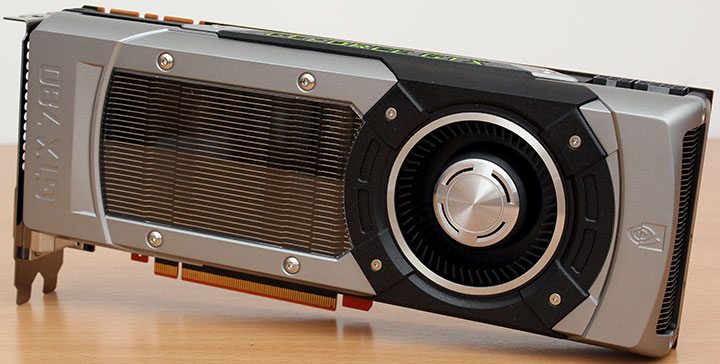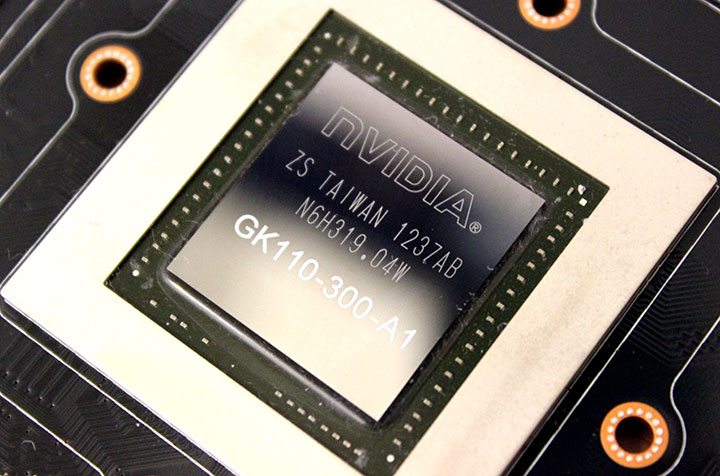Nvidia GeForce GTX 780 3GB Graphics Card Review
Chris Hadley / 11 years ago
The eagles eyed viewers out there will quickly notice the visual difference between the GTX 780 and Titan… That’s right, this one says GTX 780 on it in place of Titan. Quite simply, that is only difference between the cards when looked at from the cooler side – this is because the two cards share that same cooler, although a couple of under the cover changes have been made to improve the cooling a little which I will get on to later on.

Prising the cooler off the card and having a closer look at the PCB, there are a few differences that can be seen, but one component that partly remains is the GK110 core that was originally featured on Titan. Now while both cards share the same core at heart, the two are different with the 780 featuring a different revision to that found on the Titan PCB. The core on the 780 most importantly has less CUDA cores than Titan, but it also has a higher clock speed and obviously with this card having only half the vRAM and a different revision of the GK110 core, there is no chance of ‘unlocking’ it to Titan – that’s unless you have the machinery and components required to do so.

Flipping the PCB over, the other notable difference as mentioned above is the drop in vRAM, whilst both cards share the same base PCB, whereas Titan has a double stacked memory configuration with chips on both sides of the PCB, the GTX 780 only has vRAM under the cooler and around the GPU core.

Whilst the GTX 780 shares the cams cooler ID as Titan, NVIDIA have made one subtle change to the on-board fan controller which for those with a acute sense of hearing will be good news. The new 780 features an improved controller that uses and adaptive temperature filter to eliminate unnecessary fluctuations in the fans speed. The reduction in changes to the fans speed in turn will created a more consistent acoustic output from the fan, which will in turn be more pleasant to the ear during operation.

Like may top end Kepler cards, the GTX 780 has a impressively low TDP of 250W, requiring power from an additional 6 + 8 pin power connector.

Over Titan which supported up to three way configurations, the GTX 780 will support not only two and three, but also four way configurations with scope for up to 70% scaling in performance when two cards are used together.

One aspect of the 780 that remains unchanged is that array of display outputs, with single and dual-link DVI, HDMI and DisplayPort 1.2.

As mentioned right back at the start of this review, the GTX 780 is based around the powerful GK110 Kepler core. with a transidtor count of 7.1b, the 28nm core is come to 2034 CUDA cores, and a core clock speed of 863MHz, boosting up to 902MHz through GPU Boost 2.0. The memory clock remains unaltered from the top send 600 series cards with a clock speed of 6Gbps effective on a 384bit interface.




















